This article was co-authored by Lauren Urban, LCSW. Lauren Urban is a licensed psychotherapist in Brooklyn, New York, with over 13 years of therapy experience working with children, families, couples, and individuals. She received her Masters in Social Work from Hunter College in 2006, and specializes in working with the LGBTQIA community and with clients in recovery or considering recovery for drug and alcohol use.
There are 25 references cited in this article, which can be found at the bottom of the page.
This article has been viewed 26,210 times.
Attention-Deficit/Hyperactivity Disorder (ADHD) is a brain-based disorder that impacts a person’s ability to concentrate and focus. Children are still developing and learning how to conduct themselves, and when they are impacted by ADHD, this development can be even harder. Help your child learn strategies for managing ADHD so that he or she has good habits to carry him successfully through life. Start establishing routines and consistent structure to provide a solid foundation for handling his or her ADHD.
Steps
Recognizing ADHD Symptoms in Children
-
1Determine if your child has inattentive symptoms of ADHD. In order to get a proper diagnosis, your child should be appropriately evaluated by a certified mental health professional. Children under the age of 17 who exhibit at least six symptoms in more than one setting for a duration of at least six months qualify for diagnosis. Those who are 17 years old or older qualify if they display only 5 symptoms for at least 6 months. Symptoms must be inappropriate for the person’s developmental level and be seen as interrupting normal functioning in social or school settings. Symptoms for ADHD (inattentive presentation) include: [1]
- Makes careless mistakes, is inattentive to detail
- Has trouble paying attention (tasks, playing)
- Doesn’t seem to be paying attention when someone is talking to him
- Doesn’t follow through (homework, chores, jobs); easily sidetracked
- Is organizationally challenged
- Avoids tasks requiring sustained focus (like schoolwork)
- Can’t keep track of or often loses keys, glasses, papers, tools, etc.
- Is easily distracted
- Is forgetful/loses things
- Blurts out answers before the question is asked
-
2Determine if your child has hyperactive/impulsive symptoms of ADHD. Some symptoms must be at the level of “disruptive” for them to count in a diagnosis. Track if your child has at least six symptoms in more than one setting, for at least six months: [2]
- Fidgety, squirmy; taps hands or feet
- Feels restless, running or climbing inappropriately
- Struggles to play quietly/do quiet activities
- “On the go” as if “driven by a motor”
- Excessive talking
- Struggles to wait for his turn
- Interrupts others, inserts self into others’ discussions/games
Advertisement -
3Assess if your child has Combined ADHD. If your child has six symptoms from either category, he or she may have Combined presentation of ADHD. [3]
-
4Get a diagnosis from a mental health professional. As you determine your child’s level of ADHD, seek the guidance of a mental health professional to make an official diagnosis.
- This person will also be able to determine whether your child’s symptoms can be better explained by or attributable to another mental or psychotic disorder.
-
5Ask your child’s mental health professional about other disorders. As if having an ADHD diagnosis isn’t challenging enough, one out of every five with ADHD is diagnosed with another serious disorder (depression and bipolar disorder are common partners). One-third of children with ADHD also have a behavioral disorder (conduct disorder, oppositional defiance disorder). [4] ADHD tends to pair up with learning disabilities and anxiety, too.[5]
- Talk with your doctor or mental health professional about other disorders or conditions that might have symptoms that are similar to ADHD.
Helping Your Child Become Independent
-
1Be honest with your child. Don’t hide the fact that your child has ADHD. Be honest with him, helping him to understand the disorder. [6]
-
2Don’t use ADHD as a crutch. Teach your child that ADHD is not an excuse for not being able to accomplish something. It can be easy to blame ADHD for anything from not completing homework to isolating oneself at home. But ADHD isn’t necessarily debilitating, as long as the individual recognizes that he is a capable person.[7]
-
3Don’t shield your child too much. Your nature as a parent is to protect your child, whether it’s from harm, teasing, bad decisions, and so on. But it’s important for your child to experience the consequences of his decisions. This will help him build independence and confidence. [8]
-
4Encourage peer interactions for your child. One of the big challenges people with ADHD face as adults is that they didn’t learn to socialize appropriately as a child.[9] Encourage your child to participate in peer interactions such as Sunday school or scouting activities, sports teams, extracurricular groups, and so on.
- Find an organization which will allow you and your child to volunteer together, such as a local food pantry.
- Host parties and encourage attendance at parties that will help your child to live as normal a life as possible. If your child is invited to a birthday party, have a frank discussion with the hosting parents and explain that you need to attend to act as an anchor—and disciplinarian, as necessary. They will appreciate your candor and your child will benefit from the experience.
-
5Try role playing to prepare your child for unfamiliar events. Decrease the potential for anxiety by role playing it. In addition to providing familiarity and a comfort level for the upcoming event, role playing allows you to see how your child might react then guide him or her in appropriate responses. [10] This is especially helpful in prepping to meet new people, work out conflicts with friends, or going to a new school.
Using Routines and Structure at Home
-
1Focus on establishing consistency, routines and structures. The key to success lies in establishing consistent schedules and routines combined with organization and structure. Not only will this alleviate the stress on the child with ADHD, but it should also decrease misbehaviors that are spurred on by that stress. The less stress, the more success; the more success—and resultant praise [11] —the better the self-esteem, which sets a child up for additional success in the future. [12]
- Consistency and routines will help your child participate around the house more easily. Chores are often a sticking point for children, especially those with ADHD. Decrease the arguments and petulance of assigning chores by setting and enforcing a consistent time they occur. Tie them to a regular reward whenever possible. For example, instead of serving dessert at the end of dinner, serve it after the table is cleared and dishwasher loaded. Beds must be made before going outside to play.
-
2Break up tasks into small pieces. Children with ADHD need tasks to be broken into steps—chunking—that are given either one at a time or in written form. Parents should give positive feedback as the child completes each step. [13] , [14]
- When you give instructions, give them one step at a time. Then have your child repeat the instruction then getting praise at each step.[15]
For example:
- Loading the dishwasher: First load all the plates on the bottom. (“Great job!”). Now load all glasses on the top. (“Excellent!”). Next is silverware …
- When you give instructions, give them one step at a time. Then have your child repeat the instruction then getting praise at each step.[15]
For example:
-
3Help your child learn time management. A child with ADHD doesn’t have a great concept of time.[16] People with ADHD struggle with clock issues, both with gauging the amount of time it will take to accomplish a task and estimating how much time has passed. Give your child ways to report back to you or complete a task in the right amount of time. For example:
- Buy a kitchen timer to take outside when you want him to come in after 15 minutes—or play a CD and tell her she needs to complete her chores by the time it ends.
- You can teach a child to brush teeth the right length of time by humming the ABCs or the Happy Birthday song.
- Play beat the clock by trying to finish a chore before a particular song ends.
- Sweep the floor to the rhythm of a song.[17]
-
4Establish storage systems. Children with ADHD are constantly trying to make sense of their environment. Parents can help by organizing the home, especially the child’s bedroom and play area. Establish a storage system that separates items into categories and reduces the crowding that leads to overload. Consider color-coded storage cubes and wall hooks as well as open shelves. Use picture or word labels to remind them what goes where.[18] , [19]
- Label storage tubs with corresponding pictures. Have separate storage tubs for different toys (dolls in the yellow bucket with a picture of Barbie taped on it, My Little Pony toys in the green bucket with the horse picture attached, etc.). Separate clothing so that socks have their own drawer and there’s a picture of a sock on it, and so on. [20] , [21]
- Keep a box or a storage bin in a central location of the home where you can pile your child’s toys, gloves, papers, Legos, and other miscellany that tend to spread all over the place. It will be easier for the child with ADHD to empty that bucket than to be told to pick up all her things from the living room. [22]
- You also might establish a rule that the third time you find Darth Vader in the living room unattended, he gets confiscated for a week—or that if the bucket gets full, a lid will be put on it and it’ll vanish for a while with all those special treasures inside.
-
5Maintain structure during school breaks. Winter, spring, and summer breaks can be nightmarish times for parents of children with ADHD as the structure and schedule of the past school year suddenly ends. Imagine walking a high wire without a net for nine months and then all of a sudden, the wire snaps and you are plummeting toward the ground. That’s summer break for a child with ADHD: falling without a net in place. Plan ahead and install structure so your family doesn’t unravel!
Helping Your Child Succeed in School
-
1Coordinate with your child’s teachers. Meet with your child’s teacher to discuss a variety of topics with the teacher. These include effective rewards and consequences, effective homework routines, how you and the teacher will communicate on a regular basis about problems and successes, how you can mirror what the teacher is doing in the classroom for greater consistency, and so on. [23]
- For some students, success will be obtained relatively easily by establishing consistent schedules, routines, and homework communication methods as well as utilizing effective organizational tools such as planners, color-coded binders, and checklists.
-
2Use a daily planner for your child. Organization and consistent routines will save the day when it comes to homework, and it’s a good idea to coordinate with teachers whenever possible. Does the teacher provide a daily homework list or does the school promote the use of planners? If not, buy a planner that has plenty of space to write daily notes and show your child how to use it.
- If the teacher(s) can’t or won’t commit to initialing the planner every day, ask the teacher to help find a responsible student—a homework buddy [24] —to check the planner before dismissal each afternoon.
-
3Reward your child with praise. [25] Every day the planner comes home, make sure to give your child praise. Then make sure the planner back into the backpack every morning before school. Arrange for the homework buddy to give morning reminders to turn in the homework, too.
-
4Establish a consistent homework routine. Homework should be completed at the same time and same place every day. Have plenty of supplies on hand, organized in bins if you have the space.
- Be sure homework doesn’t start the second your child walks in the door. Let him get rid of excess energy rising a bike or climbing trees for 20 minutes, or let him chatter and get that excess talking out of his system before telling him to do seatwork.
-
5
-
6Help your child keep track of school belongings. Many children with ADHD have trouble keeping track of their belongings and struggle deciding or remembering which books to bring home each night—let alone remembering to take them back to school the next day.
- Some teachers will allow students to have a “home set” of textbooks. [28] This might be a recommendation for inclusion on an IEP as well.
-
7Get an individualized education plan (IEP) for your child. You need to provide documentation of your child’s ADHD diagnosis. Then you need to complete a special education evaluation that shows the child’s disability is interfering with his education. The school will then ask you to participate in an IEP conference. An IEP is a formalized document created by school staff and parents that spells out the academic, behavioral, and social goals of special-ed students, how results will be determined, specific interventions that will be used to achieve the goals, and so on. It lists decisions made concerning self-contained classrooms, percentage of time in mainstream classrooms, accommodations, discipline, testing, and more.
- Be sure that the IEP is specific to your child and that your input is included in the form. Do not sign a completed IEP until you have reviewed it and added your input. [29]
- The school is legally bound to follow the guidelines laid down in the IEP. Teachers who fail to follow the IEP can be held liable.
- The school is also required to invite parents to regular IEP conferences to evaluate the progress of the child and the effectiveness of the plan. Then adjustments can be made as needed.
- Once a child has an initial IEP, it becomes easier to establish special education services when changing schools or transferring to a new school district.
-
8Act in your child’s best interests. Unfortunately, even with outstanding cooperation and effort by the adults, many children still will not succeed. They may require more intensive services available through the school or district special education department. In some cases, rigid teaching methods by inflexible teachers are the issue [30] and parents must seek administrative support or look into changing teachers, changing schools, or exploring special education options. Choose the best paths for your circumstance to ensure maximum success for your child.
Using Positive Reinforcement
-
1Use positive input. You can get someone to cooperate better by asking nicely than by demanding or threatening. Those with ADHD are even more sensitive to the threats or demands, as they tend to feel that they’re “always” messing up or in trouble. Regardless of your parenting style or personality, it’s extremely important that you keep the input ratio weighted to the positive side: A child with ADHD needs to feel that he or she is being praised more often than criticized. The positive input must significantly outweigh the negative input to counterbalance all the feelings of failure that is encountered in a typical day.
- Work overtime to “catch him being good”[31] and praise every conceivable achievement, however silly you might feel at first.
-
2Write house rules as positive statements. Whenever possible, invert house rules so they read as positives.[32]
- For instance, instead of admonishing, “Don’t interrupt!” the rule can be reminded as “Wait your turn,” or “Allow your sister to finish what she was saying.” It might take practice to flip those negatives from “Don’t talk with your mouth full!” to “Finish what’s in your mouth before sharing.” But work to make it a habit.
-
3Use incentives. There’s an adage that applies well to children with ADHD, about the donkey moving faster for a carrot (reward) than a stick (punishment). Are you having trouble getting your child to bed on time? You can offer a stick (“Be ready for bed by 8 p.m. or else ….”) or you can find a carrot: “If you are ready for bed by 7:45 p.m., you can have 15 minutes to …”
- Buy a little bucket and stock it with “carrots.” These can be little rewards you can dole out when your child complies with a directive or behaves appropriately. Get a roll of stickers, a bag of 20 plastic army guys at a dollar store or a sack of 12 sparkly rings from the birthday party aisle. Get creative and add homemade coupons good for a popsicle, 10 minutes on the computer, playing a game on Mom’s phone, getting to stay up 15 minutes later, getting a bubble bath instead of taking a shower, etc. In time you can cut back to intermittent tangible rewards.[33] Instead, use verbal praise, hugs, and high-fives that allow you to continue a high degree of positive input[34] that will motivate your child to behave while building his or her self-esteem.
-
4Transition to a points system for rewarding good behavior. Once you’ve experienced success with the carrot bucket, wean your child from concrete rewards (toys, stickers) to praise (“Way to go!” and high-fives). Then you might consider designing a point system for positive behavior. This system acts as a bank where your child can earn points to buy privileges.[35] Compliance earns points and non-compliance loses points. Record these points on a sheet or poster that is accessible to the child.
- Organize the form for the ADHD brain, which increases the odds of achieving success. This is also good for self-esteem. Make a checklist[36] built around the child’s schedule,[37] showing the deadlines for completing tasks. [38]
- Choose possible rewards that will motivate your child. This system also serves to externalize those motivations. [39]
-
5Keep a positive attitude. It’s key for you as the parent to maintain a positive, optimistic attitude. Take care of yourself, let go of the little things, and remember how much you love your child.[40] It can be very challenging to raise a kid with ADHD, but having a positive attitude will go a long way.
Disciplining Your Child
-
1Be consistent with discipline. All children need discipline and they need to learn that bad behavior comes with consequences. [41] ,[42] For discipline to be effective at changing behavior, it must be consistent. Your child will know the rules and the consequences for breaking the rules. The consequence happens the same every time the rule is broken.
- In addition, the consequence applies whether the misbehavior happens at home or in public. Consistency is vital, and a lack of it can lead to a child developing confusion or willfulness.
- It’s crucial that all caretakers are on board, disciplining the same way. [43] When there is a weak link amongst the adults in the child’s sphere, that weakness will be exploited every time. He or she will “shop for a better answer” or play the “divide and conquer” game. Be sure that the babysitter, Sunday school teacher, daycare or after-school provider, scout leader, grandparents, and other adults who have charge of your child are on board with your desire for consequences that are consistent, immediate, and powerful.
- Don’t backtrack on consequences. If you threaten a dire consequence, and the bad behavior occurs, follow through on the promised punishment. If you don’t follow through, your child won’t listen the next time you try to coerce good behavior or prevent bad behavior. This is because you’ll already have a track record in his or her eyes.[44]
-
2Enforce the discipline immediately. The consequence for a problem behavior has an immediate impact. It is not delayed. Persons with ADHD often struggle with time concepts,[45] so postponing a consequence has no meaning. It invites an explosion if the child gets a forgotten consequence for a previous infraction that might as well have happened a year ago.[46] ,[47]
-
3Ensure your consequence is powerful. If the consequence for speeding was paying a fine of a buck for every mile per hour over the speed limit, we’d all speed constantly. This is not a powerful enough consequence to change our behavior. We tend to monitor our speed to avoid a $200 ticket plus higher insurance premiums. The same applies to children with ADHD. The consequence needs to be powerful enough to act as a deterrent.[48] ,[49]
-
4Don’t respond to misbehavior emotionally. Your anger or raised voice may cause anxiety or send a message that your child can control you by getting you angry. Remaining calm and loving will convey the message you want. Before taking action, do a self-check to make sure you are responding in the way you want to respond.[50]
-
5Don’t allow your child’s persistence to cause you to cave in. Your child may ask you ten times to have a special privilege and you say no nine times. But if you finally give in at the end, the message sent and received is that being a pest will pay off. [51]
-
6Don’t reward bad behavior by giving your child the attention he wants. Some kids crave attention badly enough to behave badly so they’ll get it. Instead, reward good behavior with an abundance of attention but consequence bad behavior with limited focus lest your attention be interpreted as a reward! [52]
-
7Communicate with your child firmly. Don’t argue or vacillate. Once you give a specific instruction, it is to be followed without exception, because you are the boss. If you allow your child to argue, he or she sees that as an opportunity to win. Thus, you lose. [53] , [54]
- Don’t talk until your child is focused on you. Make sure your child is making eye contact with you. If you assign a task, make the instructions brief and have him repeat it back to you. Wait for the job to be completed before distracting him with anything else.[55]
-
8Use timeouts effectively. Many parents use timeout systems but they frequently are not used properly. How many times have you seen a child sent into a timeout for a specified number of minutes then released, time having been served. Instead of a timeout being a prison sentence, use this time [56] as an opportunity for the child to self-calm and contemplate the situation. Then, he or she will discuss with you how this situation came about, how to resolve it and how to prevent it from happening again in the future. You’ll also talk about consequences if it should reoccur.
- Choose a designated spot in your house where your child will stand or sit quietly. This should be a place where he or she cannot see the television or otherwise be distracted.
- Designate an amount of time to remain quietly in place, self-calming (usually not more than one minute per age of the child). As the system becomes more comfortable, the child might remain in place simply until he or she has achieved a calm state.
- Then ask permission to come talk it over. The key is to allow the child time and quiet; give praise for a job well-done. Don’t think of timeout as a punishment; consider it a reboot.
-
9Anticipate problems. You need to become as adept at foreseeing the future when you have a child with ADHD. Anticipate what problems you might encounter and plan interventions to prevent them.[57]
Helping Your Child Take Medication
-
1Ask your child’s doctor mental health professional about stimulants. There are two basic categories of ADHD medication: stimulants (such as methylphenidate and amphetamine) and non-stimulants (such as guanfacine and atomoxetine). [60] Hyperactivity is treated successfully with stimulant medication because the brain circuitry being stimulated is responsible for controlling impulsivity and improving focus.[61] Stimulants (Ritalin, Concerta, and Adderall) help regulate neurotransmitters (norepinephrine and dopamine). [62]
-
2Monitor side effects from stimulants. Stimulants have fairly common side effects of decreased appetites and trouble sleeping. Sleep issues often can be resolved by lowering the dosage.
- Your child’s psychiatrist or pediatrician may also add a prescription to improve sleeping such as clonidine[63] or melatonin.
-
3Ask about non-stimulant medication. Non-stimulant medications may work better for some persons with ADHD. Non-stimulant anti-depression medications are often used to treat ADHD. These help regulate neurotransmitters (norepinephrine and dopamine).
- Some of the side effects may be more worrisome. For instance, youth taking atomoxetine must be monitored closely for potential increased suicidal ideation. [64]
-
4Work with your child’s doctor to find the right form and dosage. Deciding on the right form and specific prescription of medication is tricky because different people respond differently to different medications. Work with the doctor to find the right form and dosage for your child.
- For example, many medications can be taken in an extended-release format, which erases the need to deal with dosing at school. [65] Some individuals decline regular usage of medication and take it only on a situational basis. In these cases, individuals want a fast-acting version. For older children who learn to compensate for their ADHD challenges, medication may become unnecessary or be reserved for special occasion usage, such as when taking college entrance exams or finals.
-
5Use a pill container. Children will probably need extra reminders and assistance in order to take their medication regularly. It can help to use a weekly pill container.
-
6Check in with your child’s pediatrician periodically to assess the prescription. The medication’s effectiveness may change depending on certain factors. The effectiveness may change depending on growth spurts, hormonal fluctuations, diet and weight changes, and as resistance builds up. [66]
Managing ADHD with a Healthy Lifestyle
-
1Give your child nutritious foods. People with ADHD benefit from certain types of foods in order to boost serotonin and dopamine levels and to help with concentration.
- Experts recommend a diet rich in complex carbohydrates to boost serotonin for improved mood, sleep, and appetite. [67] Skip simple carbs (sugars, honey, jelly, candy, soda, etc.) [68] ) that cause a temporary serotonin spike. [69] Instead, choose complex carbohydrates such as whole grains, green vegetables, starchy vegetables, and beans. [70] These all act as an energy “time-release.” [71]
- Serve a protein-rich diet that includes several proteins over the course of the day to keep dopamine levels high, which helps improve focus. [72] Proteins include meat, fish, and nuts, as well as several foods that double as complex carbs: legumes and beans. [73]
- Choose omega-3 fats. ADHD experts recommend improving the brain by avoiding “bad fats” such as those found in trans-fats and fried foods, burgers and pizzas. Instead, choose omega-3 fats from salmon, walnuts, avocados and more. [74] These foods may help lower hyperactivity while improving organizational skills.
-
2Experiment with eliminating certain foods. Some studies show that eliminating wheat and dairy, as well as processed foods, sugars, additives and dyes (especially red food coloring), can have a positive impact on behavior in children with ADHD. [75] While not everyone will be willing or able to go to that length, some experimentation may produce improvements that make a difference. [76]
-
3Make sure your child gets plenty of rest. Every kid is affected when he doesn’t get enough sleep. When you throw ADHD in the mix, managing everyday challenges become that much more difficult. A lack of sleep reduces the child’s ability to focus, learn and retain information, and choose appropriate behavior. Help your child practice good sleep habits by establishing a consistent bedtime and wake-up time.
-
4Get active with your child. A child with ADHD often has excess energy, and he will benefit from being physically active. [79] Exercise helps improve focus and concentration. It also helps ward off depression and anxiety, and it can boost self-confidence.
- Go for bike rides with your child, or take him for hikes.
- Sports can be a great option for your child. Enroll your child in a sport that he enjoys playing. Usually, sports with more constant motion are better choices, such as basketball or soccer. Sports with more waiting or “down time” such as softball may not be as good for children with shorter attention spans.
Expert Q&A
-
QuestionHow do you motivate a child with ADHD?
 Laura Reber, SSPLaura Reber is a school psychologist and founder of Progress Parade, an organization that provides 1:1 online tutoring with hand-picked specialists to students with academic needs, ADHD, learning disabilities, autism, and social-emotional challenges. Laura works with a team of school psychologists and specialized teachers to create personalized approaches for homework support, academic intervention, homeschooling, unschooling, and more. Laura holds a BS in Psychology from Truman State University and a Specialist in School Psychology degree (SSP) from Illinois State University.
Laura Reber, SSPLaura Reber is a school psychologist and founder of Progress Parade, an organization that provides 1:1 online tutoring with hand-picked specialists to students with academic needs, ADHD, learning disabilities, autism, and social-emotional challenges. Laura works with a team of school psychologists and specialized teachers to create personalized approaches for homework support, academic intervention, homeschooling, unschooling, and more. Laura holds a BS in Psychology from Truman State University and a Specialist in School Psychology degree (SSP) from Illinois State University.
School Psychologist The best thing you can do is break instructions down into smaller goals and help them focus on one thing at a time. The bigger the goal or the more complex the task, the more likely your child will be to get off-track. Other than that, just encourage them and stay empathetic!
The best thing you can do is break instructions down into smaller goals and help them focus on one thing at a time. The bigger the goal or the more complex the task, the more likely your child will be to get off-track. Other than that, just encourage them and stay empathetic! -
QuestionHow can I help my child manage their ADHD more effectively?
 Michael Lewis, MD, MPH, MBA, FACPM, FACNMichael D. Lewis, MD, MPH, MBA, FACPM, FACN, is an expert on nutritional interventions for brain health, particularly the prevention and rehabilitation of brain injury. In 2012 upon retiring as a Colonel after 31 years in the U.S. Army, he founded the nonprofit Brain Health Education and Research Institute. He is in private practice in Potomac, Maryland, and is the author of "When Brains Collide: What every athlete and parent should know about the prevention and treatment of concussions and head injuries." He is a graduate of the U.S. Military Academy at West Point and Tulane University School of Medicine. He completed post-graduate training at Walter Reed Army Medical Center, Johns Hopkins University, and Walter Reed Army Institute of Research. Dr. Lewis is board certified and a Fellow of the American College of Preventive Medicine and American College of Nutrition.
Michael Lewis, MD, MPH, MBA, FACPM, FACNMichael D. Lewis, MD, MPH, MBA, FACPM, FACN, is an expert on nutritional interventions for brain health, particularly the prevention and rehabilitation of brain injury. In 2012 upon retiring as a Colonel after 31 years in the U.S. Army, he founded the nonprofit Brain Health Education and Research Institute. He is in private practice in Potomac, Maryland, and is the author of "When Brains Collide: What every athlete and parent should know about the prevention and treatment of concussions and head injuries." He is a graduate of the U.S. Military Academy at West Point and Tulane University School of Medicine. He completed post-graduate training at Walter Reed Army Medical Center, Johns Hopkins University, and Walter Reed Army Institute of Research. Dr. Lewis is board certified and a Fellow of the American College of Preventive Medicine and American College of Nutrition.
Board Certified Brain Health Physician A lot of issues like ADHD really benefit from basic lifestyle changes, like exercising and following a healthy diet. With ADHD, I'd treat it similar to treating a concussion—eliminate simple sugars and decrease carbohydrates as much as possible, unless they're from fruits and vegetables. Also, support brain health with an optimal dose of fish oil on a daily basis.
A lot of issues like ADHD really benefit from basic lifestyle changes, like exercising and following a healthy diet. With ADHD, I'd treat it similar to treating a concussion—eliminate simple sugars and decrease carbohydrates as much as possible, unless they're from fruits and vegetables. Also, support brain health with an optimal dose of fish oil on a daily basis. -
QuestionCan ADHD cause anxiety?
 Lauren Urban, LCSWLauren Urban is a licensed psychotherapist in Brooklyn, New York, with over 13 years of therapy experience working with children, families, couples, and individuals. She received her Masters in Social Work from Hunter College in 2006, and specializes in working with the LGBTQIA community and with clients in recovery or considering recovery for drug and alcohol use.
Lauren Urban, LCSWLauren Urban is a licensed psychotherapist in Brooklyn, New York, with over 13 years of therapy experience working with children, families, couples, and individuals. She received her Masters in Social Work from Hunter College in 2006, and specializes in working with the LGBTQIA community and with clients in recovery or considering recovery for drug and alcohol use.
Licensed Psychotherapist In some cases, yes. Symptoms of ADHD, like disorganization and impulsivity, can contribute to anxiety, and vice versa. Feeling hyper-alert and being focused in a million directions at once are symptoms of anxiety, but they will certainly have an impact on your executive functioning, which is affected by ADHD.
In some cases, yes. Symptoms of ADHD, like disorganization and impulsivity, can contribute to anxiety, and vice versa. Feeling hyper-alert and being focused in a million directions at once are symptoms of anxiety, but they will certainly have an impact on your executive functioning, which is affected by ADHD.
References
- ↑ Attention-Deficit / Hyperactivity Disorder (ADHD): Symptoms and Diagnosis found at http://www.cdc.gov/ncbddd/adhd/diagnosis.html
- ↑ Attention-Deficit / Hyperactivity Disorder (ADHD): Symptoms and Diagnosis found at http://www.cdc.gov/ncbddd/adhd/diagnosis.html
- ↑ Attention-Deficit / Hyperactivity Disorder (ADHD): Symptoms and Diagnosis found at http://www.cdc.gov/ncbddd/adhd/diagnosis.html
- ↑ Why Is My Child’s ADHD Not Better Yet? Recognizing The Undiagnosed Secondary Conditions That May Be Affecting Your Child’s Treatment by David Gottlieb, Thomas Shoaf, and Risa Graff (2006).
- ↑ The ADHD Update: Understanding Attention-Deficit/Hyperactivity Disorder by Alvin and Virginia Silverstein and Laura Silverstein Nunn (2008).
- ↑ http://www.webmd.com/add-adhd/childhood-adhd/features/6-parenting-tips-for-raising-kids-with-adhd
- ↑ http://www.webmd.com/add-adhd/childhood-adhd/features/6-parenting-tips-for-raising-kids-with-adhd
- ↑ http://www.webmd.com/add-adhd/childhood-adhd/features/6-parenting-tips-for-raising-kids-with-adhd
- ↑ On Their Own: Creating an Independent Future for Your Child With Learning Disabilities and ADHD by Anne Ford (2007).
- ↑ On Their Own: Creating an Independent Future for Your Child With Learning Disabilities and ADHD by Anne Ford (2007).
- ↑ ADHD and the Nature of Self-Control by Russell A. Barkley (1997).
- ↑ Organize Your ADD/ADHD Child: A Practical Guide For Parents by Cheryl R. Carter (2011).
- ↑ Putting On The Brakes: Young People’s Guide to Understanding Attention Deficit Hyperactivity Disorder (ADHD) by Patricia O. Quinn & Judith M. Stern (1991).
- ↑ Taking Charge of ADHD: The Complete, Authoritative Guide For Parents by Russell A. Barkley (2005).
- ↑ Taking Charge of ADHD: The Complete, Authoritative Guide For Parents by Russell A. Barkley (2005).
- ↑ ADHD and the Nature of Self-Control by Russell A. Barkley (1997).
- ↑ Organize Your ADD/ADHD Child: A Practical Guide For Parents by Cheryl R. Carter (2011).
- ↑ Putting On The Brakes: Young People’s Guide to Understanding Attention Deficit Hyperactivity Disorder (ADHD) by Patricia O. Quinn & Judith M. Stern (1991).
- ↑ Taking Charge of ADHD: The Complete, Authoritative Guide For Parents by Russell A. Barkley (2005).
- ↑ Putting On The Brakes: Young People’s Guide to Understanding Attention Deficit Hyperactivity Disorder (ADHD) by Patricia O. Quinn & Judith M. Stern (1991).
- ↑ Taking Charge of ADHD: The Complete, Authoritative Guide For Parents by Russell A. Barkley (2005).
- ↑ Putting On The Brakes: Young People’s Guide to Understanding Attention Deficit Hyperactivity Disorder (ADHD) by Patricia O. Quinn & Judith M. Stern (1991).
- ↑ Taking Charge of ADHD: The Complete, Authoritative Guide For Parents by Russell A. Barkley (2005).
- ↑ Why Is My Child’s ADHD Not Better Yet? Recognizing The Undiagnosed Secondary Conditions That May Be Affecting Your Child’s Treatment by David Gottlieb, Thomas Shoaf, and Risa Graff (2006).
- ↑ Organize Your ADD/ADHD Child: A Practical Guide For Parents by Cheryl R. Carter (2011).
- ↑ Putting On The Brakes: Young People’s Guide to Understanding Attention Deficit Hyperactivity Disorder (ADHD) by Patricia O. Quinn & Judith M. Stern (1991).
- ↑ Taking Charge of ADHD: The Complete, Authoritative Guide For Parents by Russell A. Barkley (2005).
- ↑ Why Is My Child’s ADHD Not Better Yet? Recognizing The Undiagnosed Secondary Conditions That May Be Affecting Your Child’s Treatment by David Gottlieb, Thomas Shoaf, and Risa Graff (2006).
- ↑ Creating an IEP/504 Plan For Your ADHD Child: 11 Action Steps and 40 Great Accommodations, (2013) found at http://assets.addgz4.com/pub/free-downloads/pdf/CreatingAnIEP504forYourADHDChild.pdf
- ↑ ADD/ADHD Behavior-Change Resource Kit by Grad L. Flick (1998).
- ↑ Taking Charge of ADHD: The Complete, Authoritative Guide For Parents by Russell A. Barkley (2005).
- ↑ Organize Your ADD/ADHD Child: A Practical Guide For Parents by Cheryl R. Carter (2011).
- ↑ Organize Your ADD/ADHD Child: A Practical Guide For Parents by Cheryl R. Carter (2011).
- ↑ Taking Charge of ADHD: The Complete, Authoritative Guide For Parents by Russell A. Barkley (2005).
- ↑ Taking Charge of ADHD: The Complete, Authoritative Guide For Parents by Russell A. Barkley (2005).
- ↑ Why Is My Child’s ADHD Not Better Yet? Recognizing The Undiagnosed Secondary Conditions That May Be Affecting Your Child’s Treatment by David Gottlieb, Thomas Shoaf, and Risa Graff (2006).
- ↑ Organize Your ADD/ADHD Child: A Practical Guide For Parents by Cheryl R. Carter (2011).
- ↑ Taking Charge of ADHD: The Complete, Authoritative Guide For Parents by Russell A. Barkley (2005).
- ↑ ADHD and the Nature of Self-Control by Russell A. Barkley (1997).
- ↑ http://www.helpguide.org/articles/add-adhd/attention-deficit-disorder-adhd-parenting-tips.htm
- ↑ Dr. Larry’s Silver’s Advice to Parents on ADHD by Larry N. Silver (1999).
- ↑ Taking Charge of ADHD: The Complete, Authoritative Guide For Parents by Russell A. Barkley (2005).
- ↑ Dr. Larry’s Silver’s Advice to Parents on ADHD by Larry N. Silver (1999).
- ↑ Taking Charge of ADHD: The Complete, Authoritative Guide For Parents by Russell A. Barkley (2005).
- ↑ ADHD and the Nature of Self-Control by Russell A. Barkley (1997).
- ↑ Dr. Larry’s Silver’s Advice to Parents on ADHD by Larry N. Silver (1999).
- ↑ Taking Charge of ADHD: The Complete, Authoritative Guide For Parents by Russell A. Barkley (2005).
- ↑ Dr. Larry’s Silver’s Advice to Parents on ADHD by Larry N. Silver (1999).
- ↑ Taking Charge of ADHD: The Complete, Authoritative Guide For Parents by Russell A. Barkley (2005).
- ↑ Dr. Larry’s Silver’s Advice to Parents on ADHD by Larry N. Silver (1999).
- ↑ Dr. Larry’s Silver’s Advice to Parents on ADHD by Larry N. Silver (1999).
- ↑ Taking Charge of ADHD: The Complete, Authoritative Guide For Parents by Russell A. Barkley (2005).
- ↑ Organize Your ADD/ADHD Child: A Practical Guide For Parents by Cheryl R. Carter (2011).
- ↑ Taking Charge of ADHD: The Complete, Authoritative Guide For Parents by Russell A. Barkley (2005).
- ↑ Taking Charge of ADHD: The Complete, Authoritative Guide For Parents by Russell A. Barkley (2005).
- ↑ Taking Charge of ADHD: The Complete, Authoritative Guide For Parents by Russell A. Barkley (2005).
- ↑ Taking Charge of ADHD: The Complete, Authoritative Guide For Parents by Russell A. Barkley (2005).
- ↑ Why Is My Child’s ADHD Not Better Yet? Recognizing The Undiagnosed Secondary Conditions That May Be Affecting Your Child’s Treatment by David Gottlieb, Thomas Shoaf, and Risa Graff (2006).
- ↑ Taking Charge of ADHD: The Complete, Authoritative Guide For Parents by Russell A. Barkley (2005).
- ↑ What Causes ADHD? (by National Institute of Mental Health)
- ↑ What Causes ADHD? (by National Institute of Mental Health)
- ↑ On Their Own: Creating an Independent Future for Your Child With Learning Disabilities and ADHD by Anne Ford (2007).
- ↑ What Medications Are Used to Treat ADHD? (by National Institute of Mental Health) found at http://www.nimh.nih.gov/health/topics/mental-health-medications/mental-health-medications.shtml#part_149868
- ↑ What Medications Are Used to Treat ADHD? (by National Institute of Mental Health) found at http://www.nimh.nih.gov/health/topics/mental-health-medications/mental-health-medications.shtml#part_149868
- ↑ What Causes ADHD? (by National Institute of Mental Health)
- ↑ What Causes ADHD? (by National Institute of Mental Health)
- ↑ Fight Back With Food by Tana Amen, R.N. in ADDitude Magazine (Winter 2014).
- ↑ Making Sense of Foods—Carbohydrates: Simple versus Complex at http://www.nutritionmd.org/nutrition_tips/nutrition_tips_understand_foods/carbs_versus.html
- ↑ Fight Back With Food by Tana Amen, R.N. in ADDitude Magazine (Winter 2014).
- ↑ Fight Back With Food by Tana Amen, R.N. in ADDitude Magazine (Winter 2014).
- ↑ Healthy Diet at http://www.cdc.gov/actagainstaids/campaigns/hivtreatmentworks/livewell/healthydiet.html
- ↑ Fight Back With Food by Tana Amen, R.N. in ADDitude Magazine (Winter 2014).
- ↑ Healthy Diet at http://www.cdc.gov/actagainstaids/campaigns/hivtreatmentworks/livewell/healthydiet.html
- ↑ Fight Back With Food by Tana Amen, R.N. in ADDitude Magazine (Winter 2014).
- ↑ Fight Back With Food by Tana Amen, R.N. in ADDitude Magazine (Winter 2014).
- ↑ What Causes ADHD? (by National Institute of Mental Health)
- ↑ http://www.webmd.com/parenting/guide/sleep-children?page=2
- ↑ http://sleepfoundation.org/sleep-topics/teens-and-sleep
- ↑ http://www.helpguide.org/articles/add-adhd/attention-deficit-disorder-adhd-parenting-tips.htm
About This Article
To help your child with ADHD, know that you aren’t alone in wanting them to succeed. Your kid’s teachers are on your side, so you should meet with them to get on the same page about routines, rewards, issues, and more. While they’re helping your child in the classroom, you can help your child at home by sticking to a routine. For example, when your kid gets home from school, give them 20 minutes to get out any extra energy by playing or talking. After their 20 minutes is up, let them complete their homework at the same time and place every day. You can also use a daily planner to help your child keep track of their homework, and praise them every time they remember to bring it home from school and then pack it in their backpack in the morning. For more help from our Mental Health co-author, including how to discipline your child with ADHD, read on!
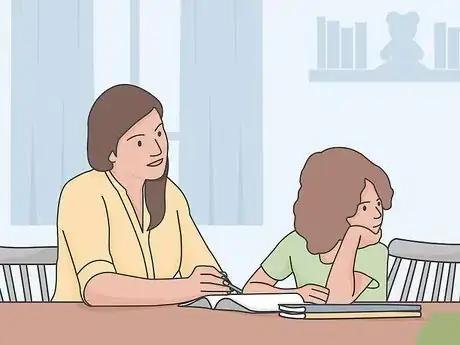
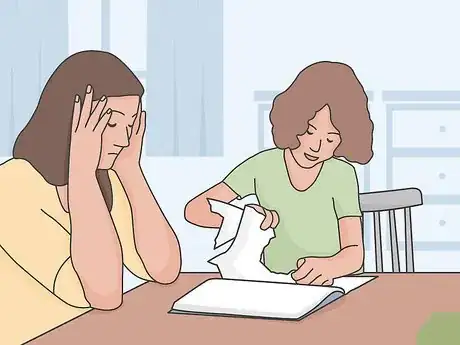
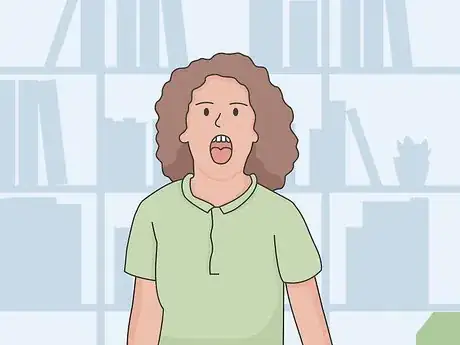


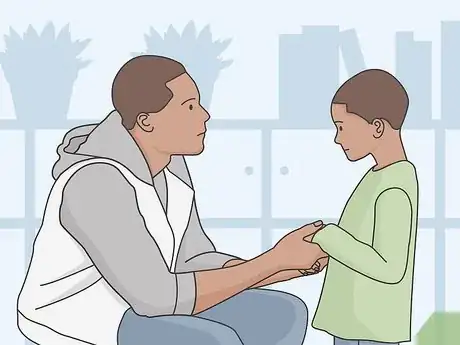
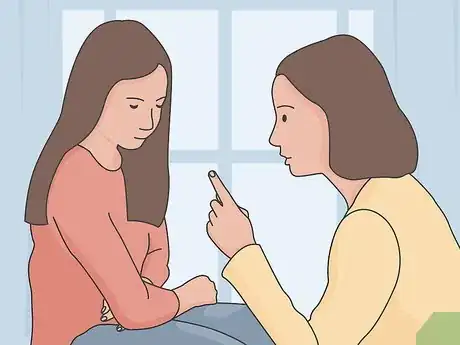

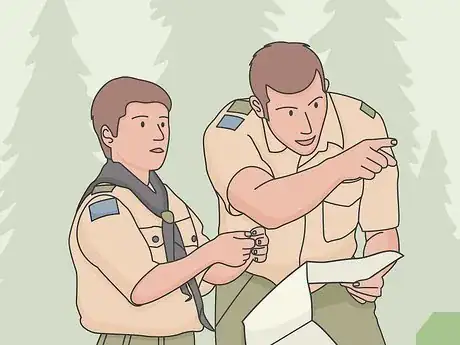
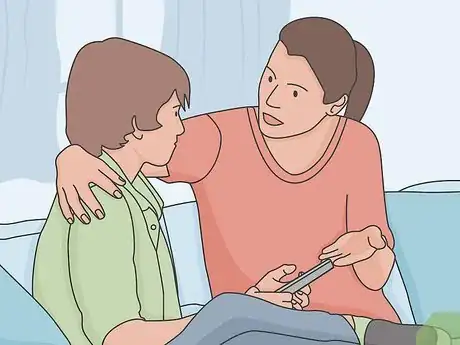

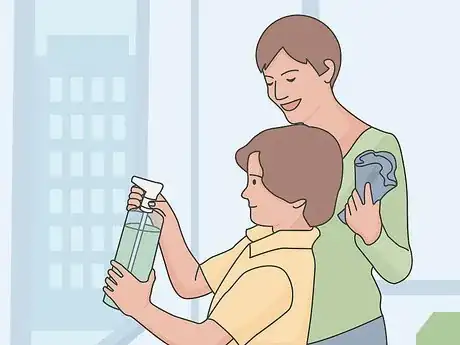

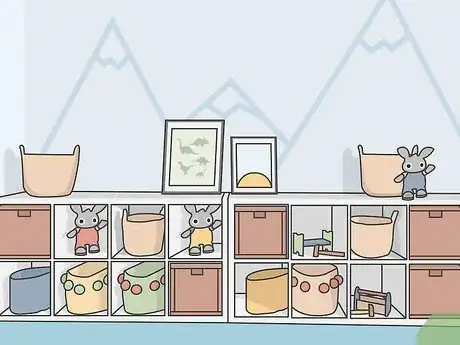


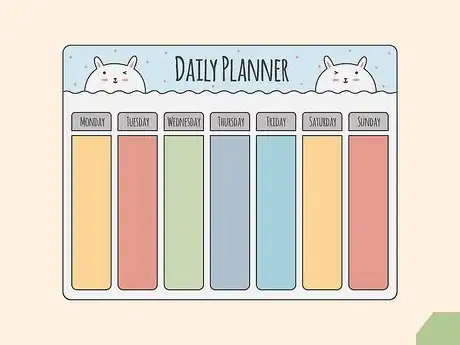

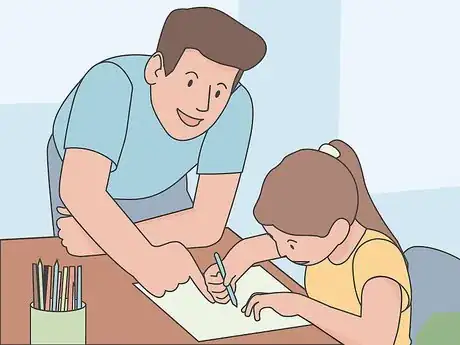

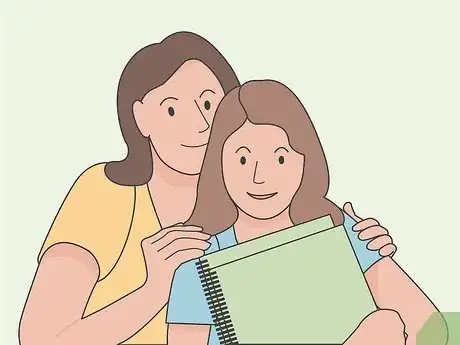
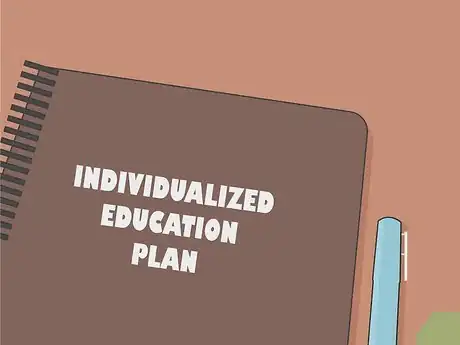
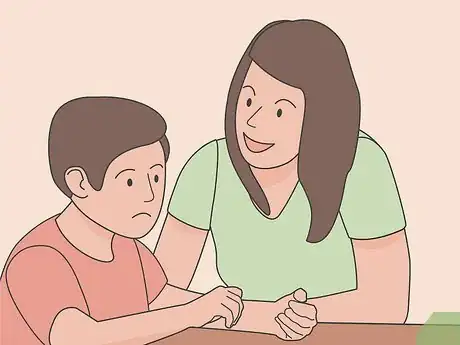
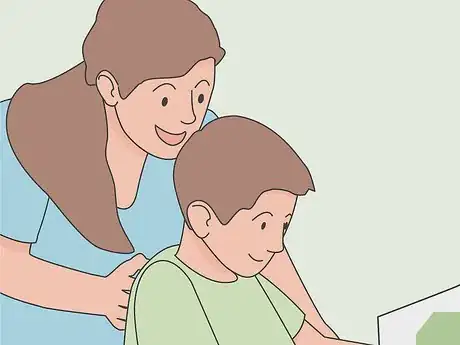
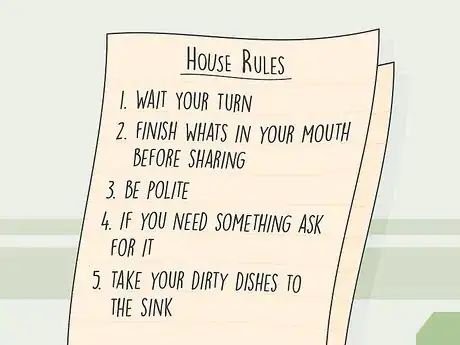

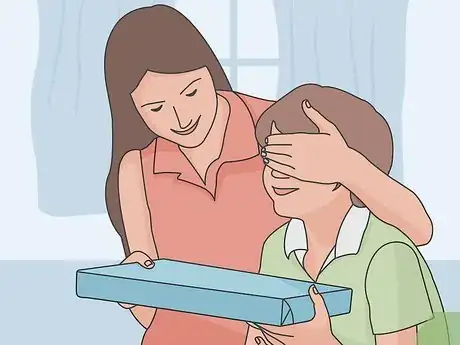
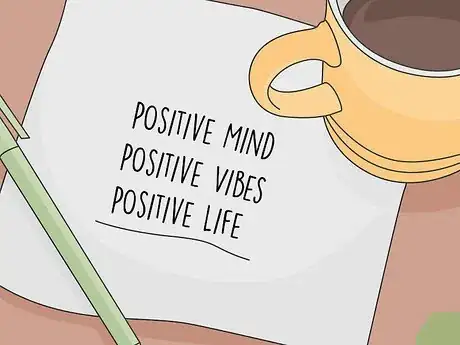

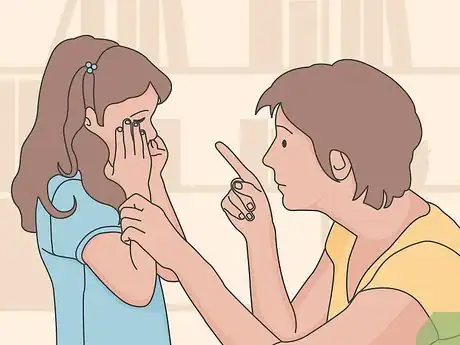
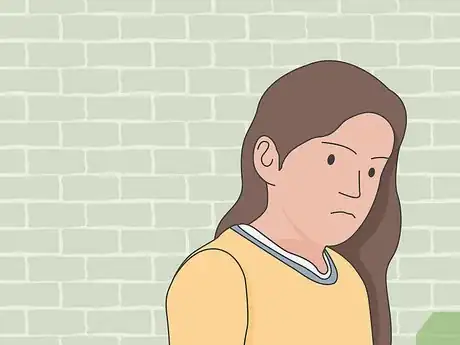

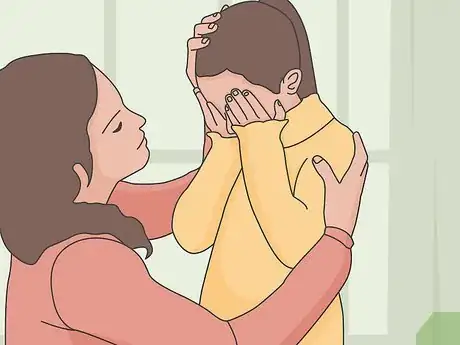
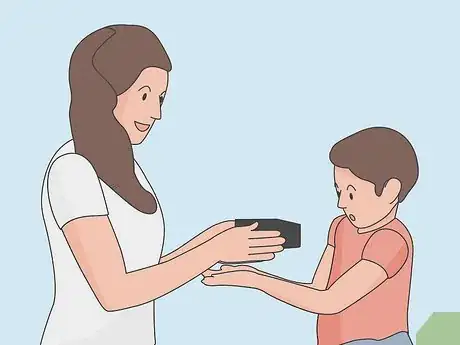

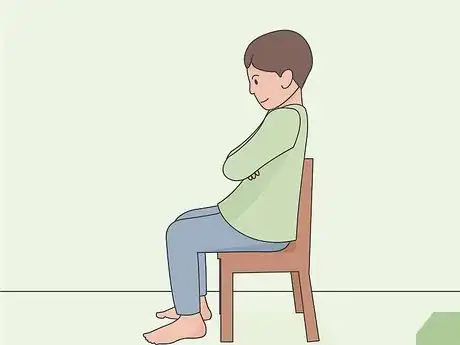
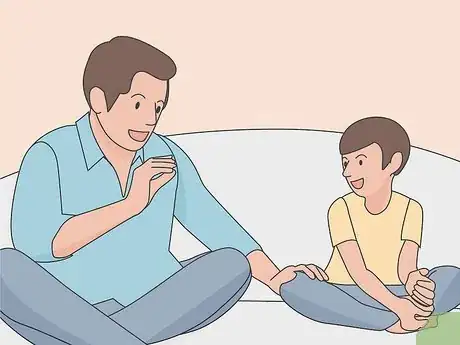
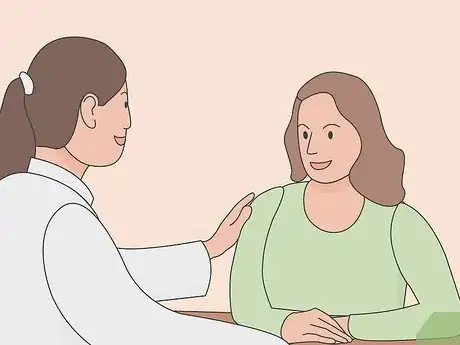
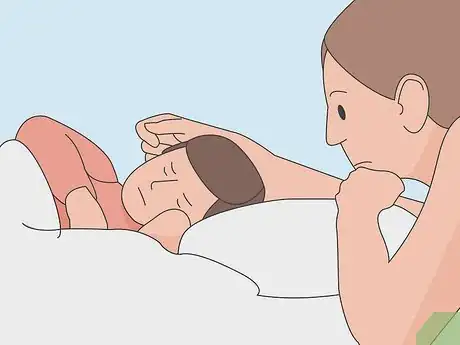
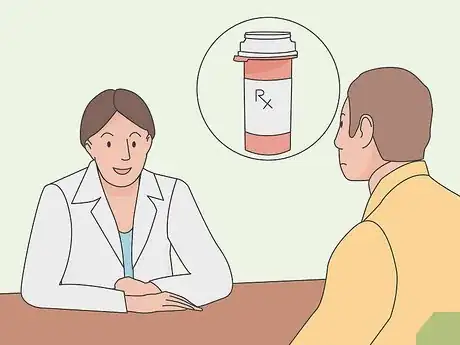
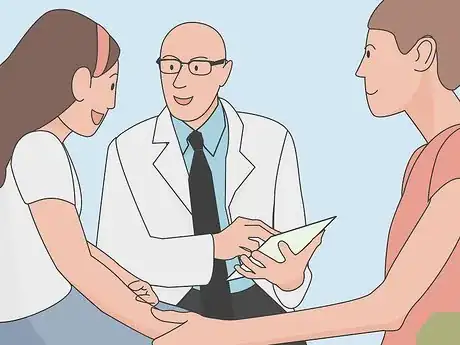
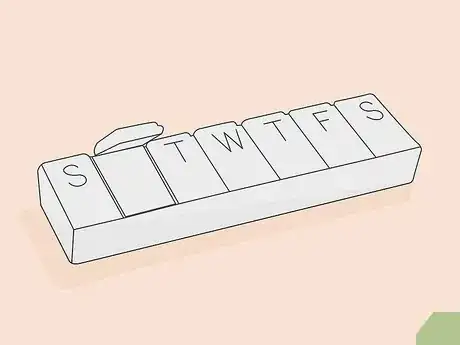
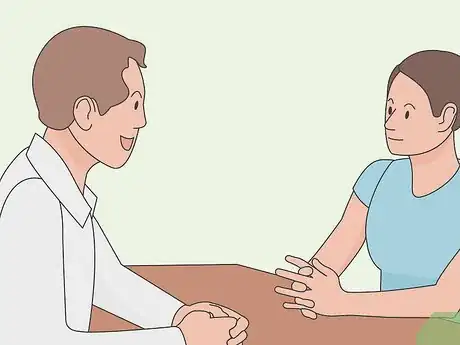
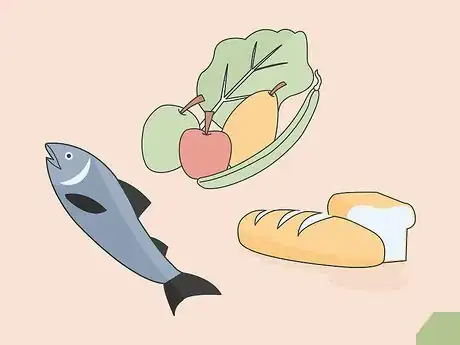

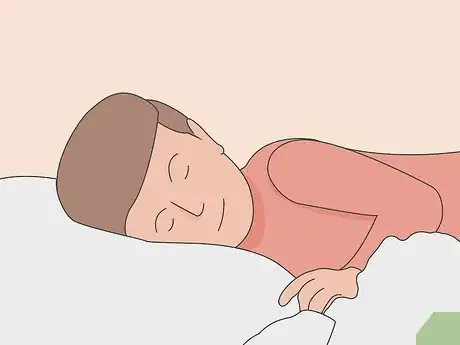
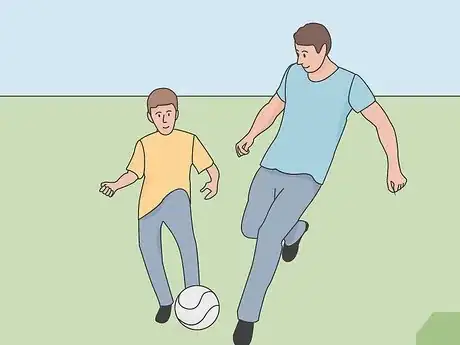





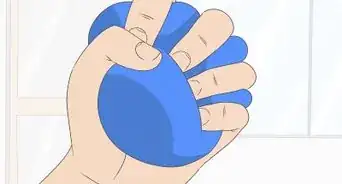

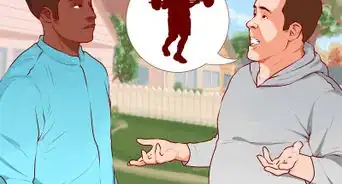
-Step-37.webp)




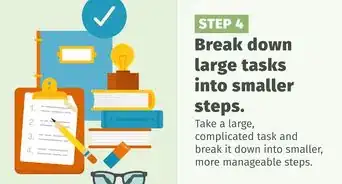














































Medical Disclaimer
The content of this article is not intended to be a substitute for professional medical advice, examination, diagnosis, or treatment. You should always contact your doctor or other qualified healthcare professional before starting, changing, or stopping any kind of health treatment.
Read More...